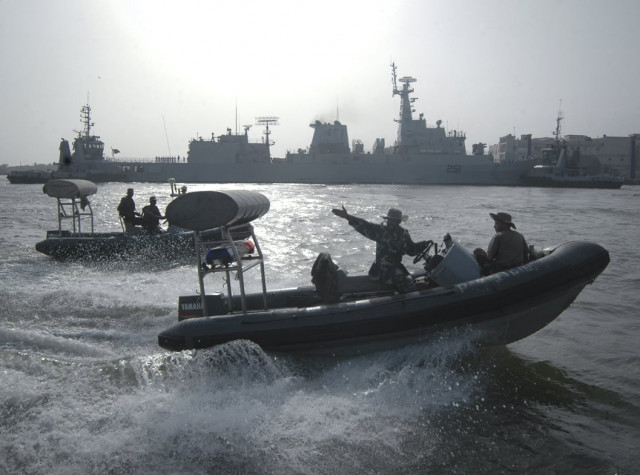Beneath the waves
There is every possibility that an Indian submarine was seeking intelligence close to our national territorial waters

In this file photo, Pakistan Navy personnel keep guard near the Navy ship PNS Zulfiqar after it returned to Karachi June 23, 2011. PHOTO: REUTERS
Contrary to popular belief, submarines do not spend their entire lives underwater unless they are of the nuclear powered type. Conventional submarines are powered by a mix of diesel and electric engines and they need to come up for air to recharge their batteries. It is most likely that this was how the vessel was detected, by naval air assets that picked up the snorkel and then vectored Pakistan surface units to intercept it. The IFF receptors on the submarine would quickly detect that it had been found and the Pakistan Navy then escorted it away. It was not attacked and the submarine made no reported attempt to attack our own assets.
In all likelihood this is not an isolated incident. The Indian submarine service will probe Pakistan’s defences at sea regularly and the Pakistan navy is equal and beyond to the task of defending our sea boundaries. None of this is going to make the headlines and for the navy this is a routine operation. It does however highlight the necessity to maintain a strong and well-equipped modern navy with the capacity to meet all potential and actual threats — and India is the only direction from which a naval threat may come. That is going to do nothing other than continue into a long future.
Published in The Express Tribune, November 20th, 2016.
Like Opinion & Editorial on Facebook, follow @ETOpEd on Twitter to receive all updates on all our daily pieces.















COMMENTS
Comments are moderated and generally will be posted if they are on-topic and not abusive.
For more information, please see our Comments FAQ